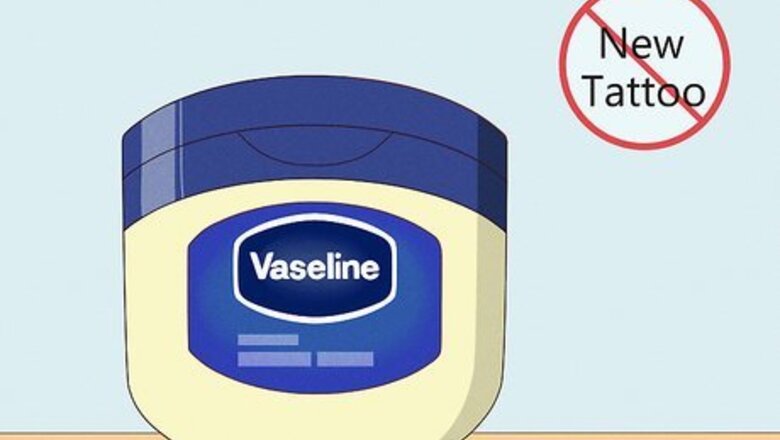
views
- Tattoo artists do not recommend using Vaseline on newly healing tattoos because it prevents oxygen from reaching the tattoo, and it traps dirt and bacteria in the area.
- While your tattoo is healing, keep it clean and moisturized with a mild lotion. Don’t scratch or pick at the scabs that form, and avoid direct sunlight and swimming.
- Keep an eye out for signs of infection. These include worsening redness, swelling and pain, itchy red bumps or a rash, and fever, chills, or sweats.
Can you put Vaseline on a tattoo?
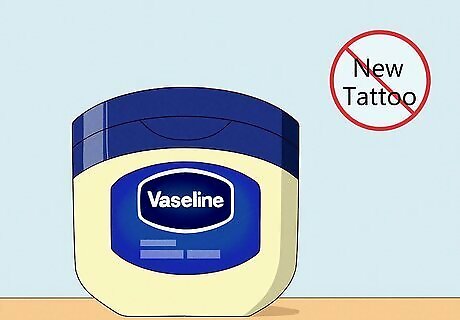
Tattoo artists do not recommend putting Vaseline on a new tattoo. Vaseline is a petroleum-based jelly. It’s non-porous, meaning it’s airtight and water-tight. Vaseline creates a barrier that keeps things from passing through, so it can prevent oxygen from reaching your new tattoo, which can delay healing. The layer of Vaseline can also trap unwanted things like dirt and bacteria underneath it, increasing the risk of infection. Because of this, many tattoo artists agree that it’s best not to use Vaseline on your tattoo while it’s healing. Use unscented, water-based lotions, such as Lubriderm Daily Moisture or Cerave Moisturizing Cream on your tattoo. You can also try lotions that are specifically formulated for use on new tattoos, such as After Inked Tattoo Aftercare Lotion. After your tattoo has healed for about 3 weeks, it’s safer to use Vaseline on it. However, dermatologists report that petroleum-based products can cause tattoo ink to fade, so proceed with caution. Talk to your tattoo artist if you aren’t sure about which products to use on your new tattoo. They’ll be happy to point you in the right direction!
Proper Tattoo Aftercare
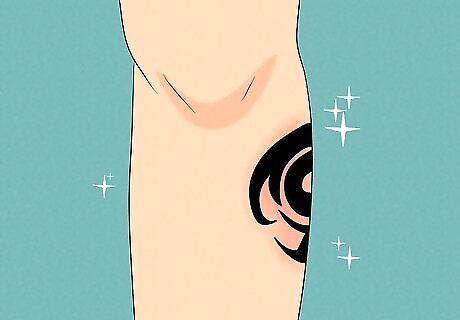
Keep your new tattoo clean and moisturized. A new tattoo is essentially a healing wound, so it’s important to keep it clean to avoid irritation and infection. When you take a shower, wash your tattoo gently with mild antibacterial soap or plain soap. Use a very light touch, and don’t scrub your skin harshly. Afterwards, gently pat (don’t rub) the tattoo dry with a clean towel or paper towel. Apply a thin layer of mild, fragrance-free moisturizer, such as Lubriderm, on the tattooed skin several times a day. Don’t apply too thick of a layer of moisturizer—this can cause the same problems as a layer of Vaseline would. After you get a tattoo, your tattoo artist will likely provide you with clear aftercare instructions. Be sure to follow them carefully to prevent infection!
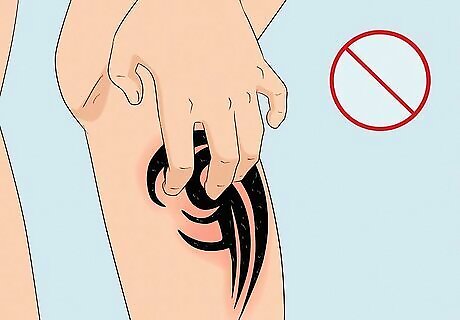
Don’t scratch or pick at your tattoo as it scabs over. During the first couple of weeks after getting a new tattoo, the skin will scab over. These scabs eventually start to flake off. The skin around your tattoo might feel itchy or irritated, but don’t scratch or pick at the scabs! Let them flake off naturally to avoid infection and unwanted scarring that can affect the appearance of your tattoo. Here are some tips to deal with the itch without harming your new tattoo: Gently tap the itchy area, rather than scratching, to prevent dislodging the scabs. Put a clean cloth over the tattoo as a barrier and pat the area. Use an ice pack to cool the area. This should soothe the itch. Make sure to place a clean cloth between your skin and the ice pack! Keep your fingernails short, and consider wearing gloves to bed. This prevents any harm to your tattoo if you accidentally scratch it in your sleep.
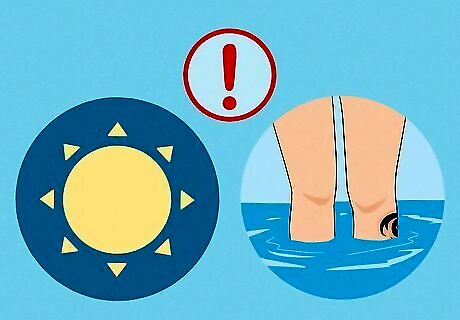
Avoid sun exposure, swimming, and tight clothing during healing. For the first few weeks after getting your tattoo, try to avoid sun exposure, and don’t swim in any pools, hot tubs, lakes, or oceans. Avoid tight clothing, as it can irritate your new tattoo and disrupt the scab as it heals. After the first few weeks have passed and the scabs have fully flaked off, you should be good to go! After your tattoo heals, make sure to protect it from UV rays. Apply water-resistant sunscreen with an SPF of at least 30, and don’t use any tanning beds.
Signs of an Infected Tattoo
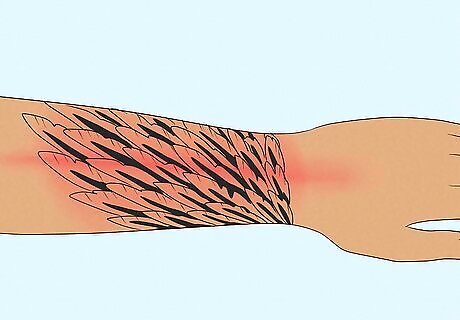
Redness, swelling, and pain. During the first 2-3 days after getting a tattoo, some redness and swelling is normal. When your tattoo is healing normally, these symptoms will start to fade. If an infection develops, however, the redness and swelling could spread, and the pain could become more severe. You might also notice red streaks running from the tattoo toward the center of your body. If these symptoms start to intensify around days 3-5, it could be a sign of infection. Consult a doctor right away to get treatment as soon as possible.
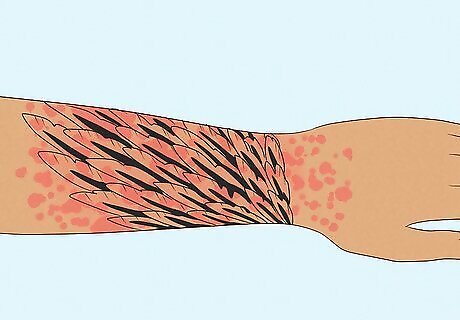
Itchy bumps or a rash. During the early stages of healing, your tattoo will start to scab over. It’s normal to experience some itching during this stage. However, if you start to develop red, itchy bumps around the tattoo site that worsen and spread, this could be a sign of infection. If you notice this symptom developing, consult a doctor to determine next steps.
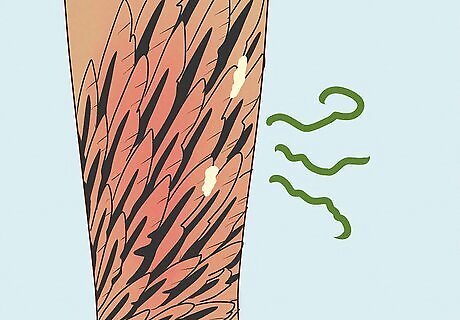
Pus or foul-smelling drainage. If you notice pus or unpleasant-smelling drainage around the tattoo site, this could be a sign of infection. Some drainage of clear fluid is normal during the early stages of healing, but if the drainage starts to appear more like pus or starts to smell different, an infection could be developing. Consult a doctor to assess the situation.
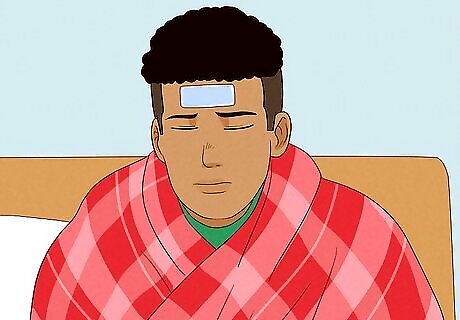
Fever, chills, and sweats. Most tattoo infections are limited to the area of the new tattoo, but some infections can become more severe. If you develop systemic symptoms, such as a fever, chills, or sweats, consult a doctor immediately. It's important to begin treatment as soon as possible to prevent the infection from spreading and becoming more severe.

















Comments
0 comment